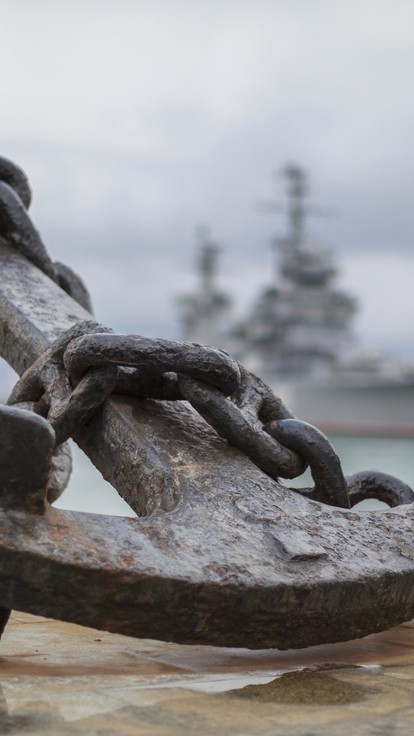“COSTA CONCORDIA” wreck removal - An expert’s view

Details
Captain Alan Loynd FNI gave praise to Hill Dickinson’s Mike Mallin in a recent article in Seaways on his presentation at the Police Officers’ Club in Hong Kong on the “COSTA CONCORDIA” wreck removal, where more than 60 members and guests defied the ‘Occupy Central’ protesters to attend his talk.
Mike, who has been a partner with the firm for 25 years and recently opened its Hong Kong office, is a Master Mariner with a degree in maritime technology. He is also an active member of The Nautical Institute. He was listed by Tradewinds as one of the world’s top five lawyers for maritime emergencies, and in 2013 he was named in the legal section of the Lloyd’s List ‘top 100 most influential people in shipping’. Recently, he represented the owners of “COSTA CONCORDIA” and their P&I Club in relation to that vessel’s grounding, capsize and subsequent removal.
The area where the grounding took place was described as ‘highend Tuscany’, an upmarket tourist destination, which is fiercely protective of its environment. Mike praised the local fishermen, whose rapid response prevented even more serious loss of life, then proceeded to describe the immediate priorities faced by the owners and local officials. The first task was to search for bodies and care of the survivors, then dealing with passenger welfare and injury claims.
The vessel was declared a crime scene, and underwriters also launched an investigation. The next priority was removal of the fuel, and the contract the services was rapidly awarded. One possible contract was Lloyd’s Open Form, often preferred by salvors, but a BIMCO wreck removal contract was preferred by underwriters since it would give them more control over what was obviously going to be a complex and highly technical operation.
While bunkers were being removed it was decided that owners should go out to tender for the wreck removal. This would take time and might increase costs in the short term, but competitive tendering would provide a wider range of choices. A ‘caretaking contract’ was awarded to keep the site secure during the tendering process. Eventually, eight viable bids were received plus, in Mike’s words, ‘some rather non-viable offers’. This process took time, in particular because of the very complex strength and stability calculations involved. Some of the tenderers claimed to have spent almost US$500,000 to prepare a workable bid. All bids were submitted on the basis of a BIMCO Wreckhire contract.
The cheapest and quickest alternative would have been to cut up the wreck where it lay, but this was politically unacceptable and was expressly forbidden by a decree from the Italian Government. Refloating was mandatory, even though it had never been attempted on such a scale. Politicians do not care about costs.
In the event the successful bid from Titan and Micoperi was the one which was felt to be most likely to succeed. Mike described the plan in detail, but space prevents us from repeating it here.
Unlike most wreck removal contracts, it was felt that the Owner’s Representative in this case should be given unusual powers, and the salvors were obliged to conform to the ‘reasonable direction’ of the representative, LOC. The contract also had to be modified to suit the unique circumstances, and owners insisted upon an ‘open book’ approach to third-party expenses. The parties also had to protect themselves against change of circumstances, since nothing was known about the damage to the submerged starboard side.
The length of the job also required a detailed study of Italian tax and VAT laws to ensure that profits and salaries were not eroded. With an ongoing criminal investigation, confidentiality became critical and some of the confidentiality clauses were ‘borrowed’ from the contract of another Hill Dickinson client, a well-known English football international.
Contractors were also banned from leaking any unauthorised information to the media and, because there were still bodies on board, cameras and mobile telephones could only be carried by a small number of senior people. Valuables remaining on board were protected and there were severe penalties for anyone who attempted to interfere with private property.
Finally, there was a misconduct clause in the contract to protect the female population of Giglio Island when 500 hot-blooded young salvors came ashore for rest and recreation. There were occasional problems but, in general, the behaviour of the salvors was impeccable.
A unique case
Among the more unusual aspects of the case, members of the salvage team were taught roping and climbing techniques so they could safely handle the challenges of working on a steeply sloping hull. Environmental protection is important and was strictly enforced.
Mike showed a montage of photographs to illustrate the scale of the operation, and describe the challenges and how they were overcome, and talked through the entire wreck removal, and the tow to Genoa for scrapping.
Captain Loynd completed his report with the following words:
‘This was a fascinating presentation, delivered with aplomb by a man who understood both the legal and professional challenges involved. His audience were not disappointed and he was still besieged by questions when the rest of us adjourned to the buffet. He may still be there.’
A version of this article appeared in the December edition of Seaways and is reproduced here by kind permission of the editor.
